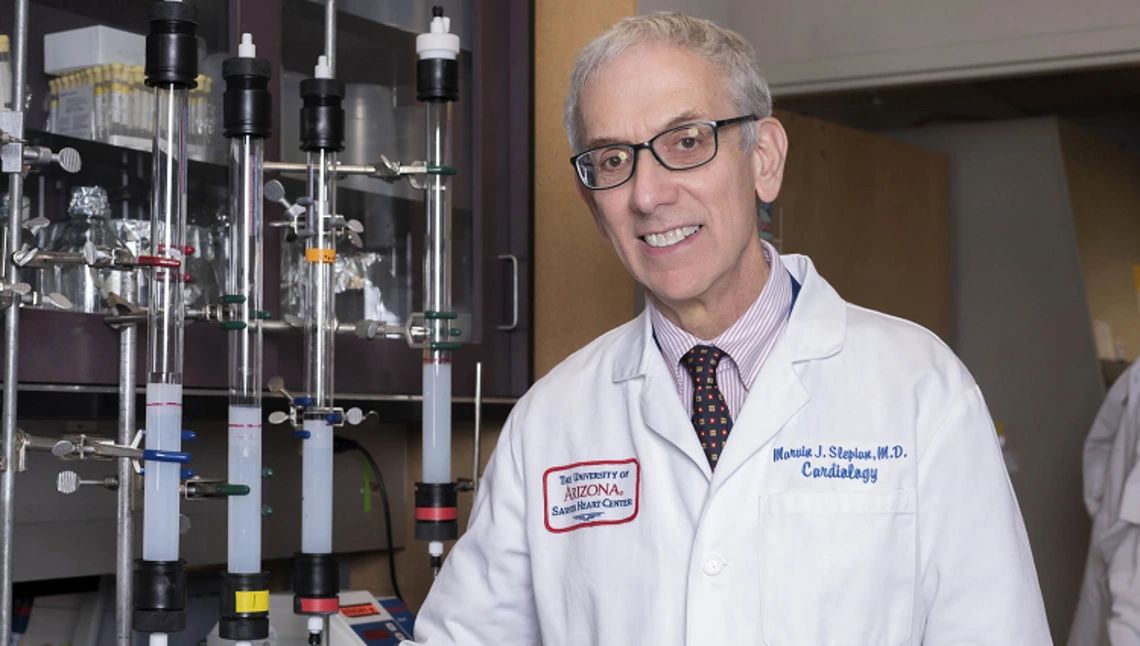Slepian Bridges Medicine, Engineering and Law in Research

BME Clinical Professor Marvin Slepian is a named inventor on over 160 issued or pending patents. He is also a Regents Professor of Medicine, Medical Imaging, and faculty at the BIO5 Institute. The secret to his success? There isn’t one. That is, there isn’t just one.
While there are a number of ways that Dr. Slepian, who also holds professorships in materials science and engineering and chemical and environmental engineering, approaches invention and several tenets that inform his teaching, the point where they all converge is in addressing unmet needs.
In the early 1980s, fresh out of medical school and a young intern at Bellevue, the teaching hospital of New York University, Slepian witnessed first-hand the growing epidemic of heart disorders. The magnitude of the problem and the unmet need for care drove Slepian onto a path that shaped his life for decades to come.
“My whole background was in microbiology and biochemistry, which would lend itself to working on infectious disease or cancer medicine or rheumatology,” said Slepian, who is also a member of the Sarver Heart Center. “Cardiology is tubes, pipes and pressures – more engineering. But I saw this gap, so I said, ‘What, if I take everything I know on the molecular side and put it into cardiology?’”
That decision took his work and education down new paths, exploring platelet clotting, inflammation and cell regrowth – complications that within just a few years would limit the effectiveness of interventions like angioplasty and stents. They were complications that his pioneering work and commitment to unmet needs would ultimately help overcome.
“You can't just be a narrowly focused science or technical person,” he said. “You have to be sensitive to society, people and the world around you. Interdisciplinary work is the buzzword today, but it’s absolutely critical you take some humanities, you understand some math and computing, gain exposure to arts and letters and civics. It’s all important.”
